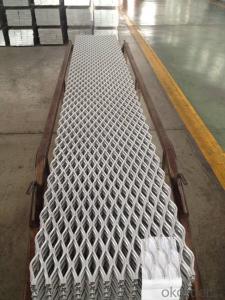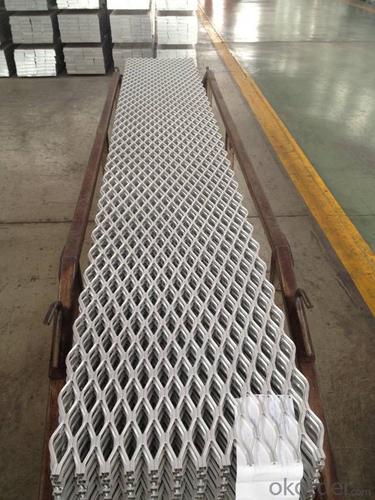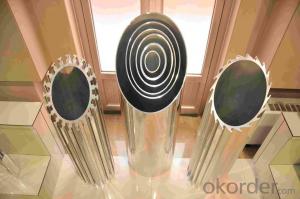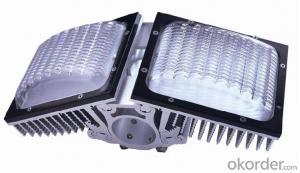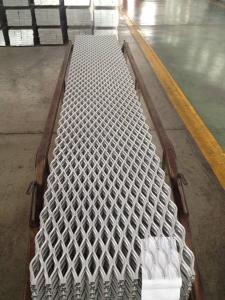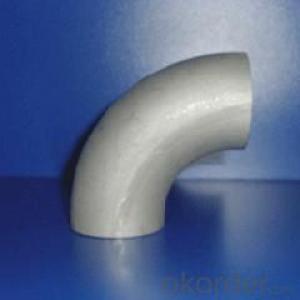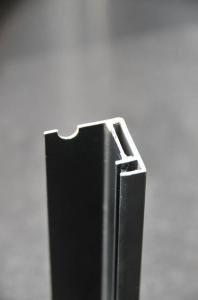Aluminum Alloy Profiles Walkway
OKorder Service Pledge
OKorder Financial Service
You Might Also Like
We are the largest aluminum profilemanufacture in
The detail descriptions of aluminum profile as bellowing:
Alloy Aluminum 6063,6061,6005,6082 or customer nominated | |
Temper | T3, T4, T5, T6 and other |
Surface | Anodize, electrophoresis, powder coating, PVDF coating, etc. |
Colour | Any colour based on Standard Germany RAL Mark |
Length | Not more than 16 meters |
Good Package | Inner plastic film /outside carton/wooden pallets |
Payment Method | T/T, L/C, etc |
Delivery Time | Normally 2-4 weeks, Delivery time can be consulted. |
Press Machine | 500-12500 tons all together 93 press lines. |
Fabrication | 1. Windows and doors; 2. Drilling; 3. Bending; 4. Cutting; 5. etc. |
Certificate | ISO/TS 16949,DNV,IRIS,CCS,AFA,etc. |
Dies | 1. Using our dies, no fee; |
2. Using customer drawing, opening dies, usually about 5~50 tons then the dies cost can be refunded. | |
3. Die cost is negotiable base on the order quantity | |
Capability | Annual output 800,000 tons |
- Q: What are the different types of hinges used with aluminum profiles?
- There are several types of hinges that can be used with aluminum profiles. Some common types include: 1. Butt hinges: Butt hinges are the most basic type of hinge used with aluminum profiles. They consist of two plates that are connected by a pin, allowing the door or panel to swing open and closed. 2. Piano hinges: Also known as continuous hinges, piano hinges are long, narrow hinges that run the entire length of the door or panel. They are often used for large or heavy doors because they provide extra support and stability. 3. Concealed hinges: As the name suggests, concealed hinges are not visible when the door or panel is closed. They are typically used for cabinet doors or other applications where a clean, seamless appearance is desired. 4. Pivot hinges: Pivot hinges are designed to allow a door or panel to pivot on a single point. They are often used for doors that need to swing in both directions or for doors that are taller than they are wide. 5. European hinges: European hinges, also known as cup hinges or hidden hinges, are commonly used in cabinet doors. They are adjustable and allow the door to be opened and closed smoothly. 6. Self-closing hinges: Self-closing hinges are equipped with a spring mechanism that automatically closes the door or panel after it has been opened. They are often used in high-traffic areas or where it is important to ensure that doors are properly closed. These are just a few examples of the different types of hinges that can be used with aluminum profiles. The choice of hinge will depend on factors such as the application, size and weight of the door or panel, desired aesthetics, and functionality requirements.
- Q: Can aluminum profiles be used in signage or display applications?
- Yes, aluminum profiles can be used in signage or display applications. Aluminum profiles are versatile and lightweight, making them ideal for creating durable and visually appealing signs and displays. They can be easily cut, shaped, and joined together to create custom frames, panels, and structures for various signage and display purposes. Aluminum profiles also offer excellent corrosion resistance, ensuring that the signs or displays remain intact and attractive even in outdoor or high-moisture environments. Additionally, aluminum profiles can be powder coated or anodized to provide a wide range of color options, allowing for branding or customization. Overall, aluminum profiles offer a reliable and cost-effective solution for signage or display applications, providing both functionality and aesthetics.
- Q: What are the thermal properties of aluminum profiles?
- Due to its inherent characteristics as a metal, aluminum profiles possess favorable thermal properties. With its high thermal conductivity, aluminum can efficiently transfer heat, making it an ideal choice for applications requiring heat dissipation or thermal management. Furthermore, aluminum profiles exhibit minimal expansion and contraction with temperature changes due to their low coefficient of thermal expansion. This exceptional stability and resistance to warping or distortion, even in extreme temperature variations, make aluminum profiles highly reliable. In addition, aluminum profiles have a comparatively low melting point, making them suitable for applications involving high operating temperatures. The ability of aluminum to withstand such temperatures without compromising its structural integrity further enhances its thermal properties. Moreover, aluminum profiles demonstrate excellent thermal insulation properties as they are not easily conductive of heat. This makes them a suitable choice for applications requiring thermal insulation or the prevention of heat transfer, such as in building and construction or HVAC systems. In summary, the thermal properties of aluminum profiles, including high thermal conductivity, low coefficient of thermal expansion, high melting point, and good thermal insulation, contribute to their versatility and widespread use across various industries, ranging from automotive and aerospace to electronics and construction.
- Q: Are aluminum profiles suitable for use in electronics manufacturing?
- Yes, aluminum profiles are suitable for use in electronics manufacturing. Aluminum is a lightweight yet durable material that offers excellent thermal conductivity, making it ideal for dissipating heat generated by electronic components. Its high strength-to-weight ratio allows for the creation of sturdy and lightweight structures, which is advantageous in electronics manufacturing where weight reduction is often desired. Additionally, aluminum profiles can be easily machined, welded, and formed into various shapes, providing flexibility in design and customization. The corrosion resistance of aluminum also ensures longevity and reliability in electronic devices. Overall, the properties of aluminum make it a suitable choice for use in electronics manufacturing.
- Q: How do I maintain and clean aluminum profiles?
- To maintain and clean aluminum profiles, there are a few steps you can follow: 1. Regular dusting: Start by removing any loose dust or dirt using a soft cloth or a feather duster. This will prevent the build-up of grime and make the cleaning process easier. 2. Prepare a cleaning solution: Mix a mild detergent or dish soap with warm water in a bucket or a spray bottle. Avoid using harsh chemicals or abrasive cleaners as they can damage the aluminum surface. 3. Wipe down the profiles: Dip a soft cloth or sponge into the cleaning solution and gently scrub the aluminum profiles. Pay special attention to any areas with stains or stubborn dirt. 4. Rinse with clean water: After cleaning, rinse the profiles thoroughly with clean water to remove any residual soap or cleaning solution. This step is crucial to prevent any residue from drying and leaving streaks or marks. 5. Dry the profiles: Use a soft, dry cloth or towel to wipe the aluminum profiles dry. This will help prevent water spots and maintain the shine of the metal. 6. Polish (optional): If desired, you can apply a non-abrasive aluminum polish to further enhance the shine and protect the surface. Follow the instructions on the polish packaging for best results. 7. Regular maintenance: To keep the aluminum profiles in good condition, it is essential to perform regular maintenance. This includes dusting them regularly, avoiding abrasive materials or cleaners, and addressing any stains or spills promptly. By following these steps, you can maintain and clean aluminum profiles effectively, keeping them looking great for longer periods.
- Q: How to distinguish aluminum alloy series?
- The general term for aluminum profiles is the ratio of length and width. For example, 4040 is so long, 40mm width is 40mm, and so on.. ,
- Q: How do aluminum profiles perform in terms of vibration resistance?
- Aluminum profiles exhibit excellent vibration resistance due to their inherent stiffness and high strength-to-weight ratio. The material's low density helps in dampening vibrations, while its structural integrity ensures minimal deformation or fatigue under dynamic loads. Additionally, aluminum profiles can be further enhanced with vibration-damping materials or techniques to optimize their performance in vibration-prone applications.
- Q: Many aluminum extrusions are edge banding materials. What special advantages do they have for opening materials?.
- Most brands have more openings. For example, New River aluminum material, the United States and aluminum, Zhong Wang aluminum and so on. Obviously, the sealing material has advantages. It's more popular now.
- Q: How do aluminum profiles perform in terms of chemical resistance?
- Aluminum profiles exhibit good chemical resistance to many common substances, including water, air, various acids, and alkalis. However, they may corrode or react with certain aggressive chemicals, such as strong acids or bases. It is important to consider the specific chemical environment and consult relevant guidelines or experts when assessing the chemical resistance of aluminum profiles.
- Q: How do aluminum profiles perform in fire-resistant structures?
- Aluminum profiles perform exceptionally well in fire-resistant structures due to their inherent fire-resistant properties. Aluminum has a high melting point and does not contribute to the spread of fire, making it a preferred choice for construction materials in fire-resistant structures. Additionally, aluminum profiles maintain their structural integrity even in high temperatures, providing excellent fire protection and ensuring the safety of the building and its occupants.
Send your message to us
Aluminum Alloy Profiles Walkway
OKorder Service Pledge
OKorder Financial Service
Similar products
Hot products
Hot Searches
Related keywords
